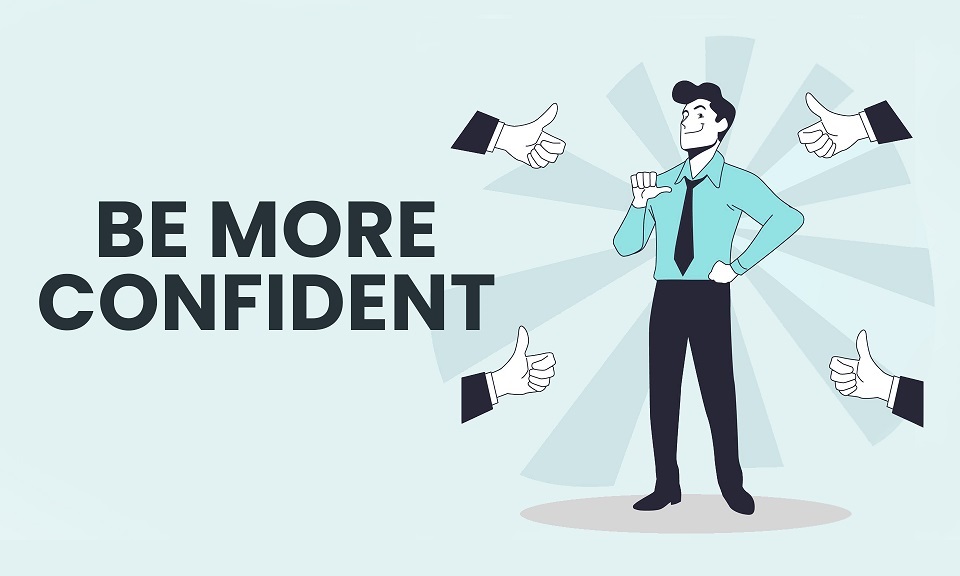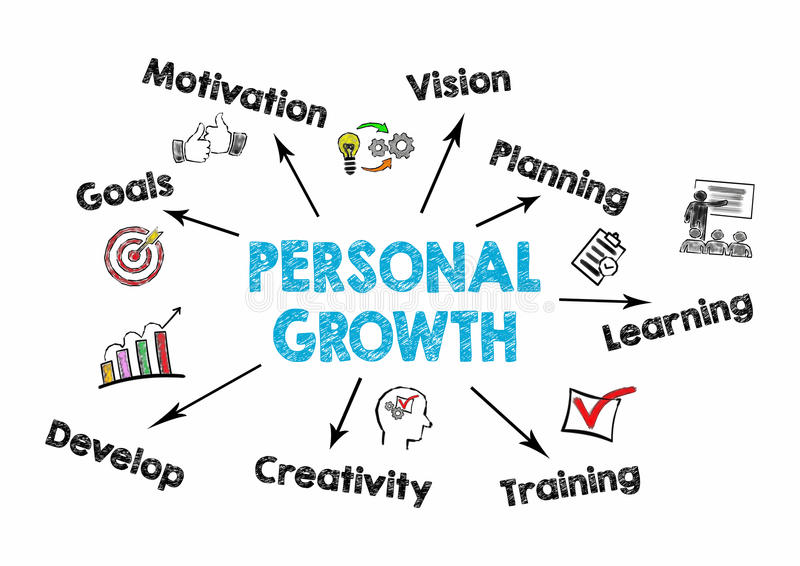Confidence is something many people want to improve, but it’s not always clear how to do it. Boosting confidence doesn’t just come from obvious actions like practicing skills or positive thinking; there are unexpected ways that can make a real difference. These simple changes can help people feel stronger and more sure of themselves in daily life.
Some surprising methods involve habits, social habits, and even the way someone uses technology. By exploring these less common ideas, anyone can find practical steps to build confidence that last over time and help in different areas of life.
Key Takeways
- Small daily actions can have a big impact on building confidence.
- Using social connections and changing routines can strengthen self-belief.
- Long-term confidence grows from consistent, simple habits and mindfulness.
Understanding the Foundations of Confidence
Confidence is built on clear ideas about who a person is and how they think. It involves real thoughts about strengths and weaknesses, plus understanding common false beliefs that block growth.
Defining True Self-Confidence
True self-confidence means trusting in one’s abilities and worth without needing constant approval. It is steady and based on real skills and values, not just feelings or luck.
This type of confidence helps a person stay calm under pressure and try new things without fear. It grows with practice and honest self-assessment.
People who have true self-confidence accept their flaws but don’t let them stop progress. They know confidence is about action, not just thinking positively.
The Psychology Behind Confidence
Confidence starts in the brain. It is linked to thoughts about one’s value and the ability to face challenges.
When a person succeeds at tasks, the brain builds a pattern that reinforces confidence. This makes it easier to take on bigger challenges later.
Conversely, negative self-talk can lower confidence by making the brain expect failure. Changing these thoughts to more realistic ones helps improve confidence.
Confidence also depends on past experiences, social support, and learning to manage fear and stress.
Common Myths About Confidence
Many believe confidence is something you are born with. This is false; confidence develops through experience and effort.
Another myth is that confident people never fail. In reality, they fail often but learn from mistakes without losing belief in themselves.
Some think confidence means being loud or outgoing. True confidence can be quiet and shows in consistent, calm behavior.
Lastly, many confuse arrogance with confidence. Arrogance is overestimating ability, while confidence is honest about what one can do.
Harnessing Daily Habits for Lasting Confidence

Daily actions shape how a person feels about themselves over time. Simple changes in posture, routines, and inner dialogue make a big difference in building lasting confidence.
Adopting Empowering Body Language
Standing tall with shoulders back and chin up sends powerful signals to the brain. It helps reduce stress and increases feelings of control.
Making eye contact during conversations shows confidence and invites respect. Even small gestures, like smiling or nodding, encourage positive feedback from others.
Practicing strong body language in front of a mirror can help make these habits automatic. This physical practice influences mental confidence gradually, reinforcing self-assurance in many situations.
Building Routines That Foster Growth
Creating daily routines with clear goals helps build confidence steadily. Breaking big tasks into small steps reduces overwhelm and increases success.
Regularly trying new skills, even small ones, strengthens belief in one’s abilities. Consistency in actions leads to visible progress, which boosts self-esteem.
Writing down daily accomplishments, no matter how minor, keeps focus on growth. Seeing progress written out makes confidence easier to maintain.
Using Positive Self-Talk Effectively
Replacing negative thoughts with positive, realistic statements encourages a more confident mindset. For example, changing “I can’t do this” to “I will try my best” shifts focus to effort and growth.
Using affirmations that feel believable supports lasting change. Phrases like “I am capable” or “I learn from mistakes” create a kinder inner voice.
Tracking negative thoughts and challenging them with facts helps break harmful patterns. This makes self-talk a tool for building, not breaking, confidence.
Leveraging Social Interactions to Strengthen Confidence
Interacting with others can directly impact confidence levels by providing opportunities to practice communication and receive positive feedback. Simple actions like starting new talks and offering sincere praise can build a sense of connection and self-assurance.
Seeking Out New Conversations
Trying to start talks with strangers or acquaintances helps build confidence by making social skills sharper. It might feel uncomfortable at first, but each new interaction is practice for handling different people and situations.
He or she can start with easy topics, such as commenting on the weather, a shared space, or asking simple questions. The goal is to stay relaxed, listen well, and show interest.
Repeated exposure to such moments reduces anxiety around social settings. Over time, the person will feel more at ease starting conversations and expressing thoughts clearly.
Giving Genuine Compliments
Giving honest compliments to others can create a positive social exchange that boosts confidence for both people. Saying something specific, like admiring a skill or a good idea, shows attention and kindness.
Compliments that feel sincere build trust and encourage conversation. It also helps the person giving them feel good about recognizing strengths in others, which can improve self-image.
Avoid overused or vague praises. For example, instead of just saying “nice job,” pointing out what was good about the job is more meaningful. This practice helps the giver become more observant and confident in social situations.
Transforming Setbacks Into Confidence Builders
Setbacks can feel discouraging, but they often hold important lessons. Knowing how to analyze failures and handle rejection helps build a stronger, more confident mindset.
Learning From Failures
When someone fails, the key is to study what happened without blaming themselves. They should ask, What went wrong? and What can I do differently next time? This helps turn mistakes into useful information instead of negative self-talk.
Writing down specific problems and ideas for improvement makes the process clearer. For example, if a project fails because of poor planning, focusing on creating a better schedule next time is a practical step.
The focus should be on progress, not perfection. Small wins after learning from failure lead to bigger confidence boosts over time.
Embracing Rejection as Growth
Rejection is hard but common in life. Viewing rejection as a chance to improve helps reduce fear around it.
When someone gets rejected, they can list what they learned from the experience. Maybe the way they presented themselves was weak, or their skills need more practice. This creates a clear path to growth.
Rejection does not define their worth. Instead, it signals areas to work on. Each time they handle rejection calmly, their confidence grows and they become more resilient.
Unexpected Lifestyle Changes That Boost Confidence
Making small changes in daily life can have a strong impact on how someone feels about themselves. Trying new looks, picking up new hobbies, or taking on different challenges can help build confidence step by step.
Experimenting With Personal Style
Changing the way someone dresses can affect how they see themselves. Trying new clothes, colors, or accessories that feel different from usual can create a fresh sense of identity. This doesn’t mean following every trend but finding pieces that feel authentic and comfortable.
Personal style experiments also send signals to others that someone is confident and open. When people receive positive feedback about their new look, it reinforces good feelings. Small changes, like a new haircut or wearing a bold color, can push someone out of their comfort zone in a healthy way.
Exploring New Hobbies and Interests
Trying something new, like painting, cooking, or learning a sport, encourages growth. New hobbies take time and effort, so progress in these areas gives a sense of achievement. That feeling helps strengthen self-belief.
Learning new skills also broadens a person’s social circle and perspective. Meeting others with similar interests can offer support and encouragement. Focusing on hobbies regularly builds discipline, which helps with confidence in other parts of life.
Volunteering for Unfamiliar Challenges
Taking on roles that feel unfamiliar, like public speaking or organizing events, pushes boundaries. Volunteering in these ways forces someone to try skills they might avoid. Success in these tasks builds proof that they can handle tough situations.
Handling challenges within volunteer work shows resilience and problem-solving. This experience increases self-respect and the belief that they can manage unexpected problems. It also adds to their skillset, which boosts confidence in personal and professional settings.
Mindfulness and Its Surprising Impact on Self-Assurance
Mindfulness trains the brain to focus on the present moment. This focus helps reduce negative thoughts and self-doubt. Using specific exercises, people can grow their confidence by better controlling their thoughts and feelings.
Practicing Mindful Awareness
Mindful awareness means paying close attention to thoughts and emotions without judging them. When a person notices negative self-talk, they can choose not to believe it. This practice helps prevent worries from building up.
To start, a person can spend a few minutes each day sitting quietly and noticing their breathing. When their mind wanders, they gently bring it back. Over time, this makes it easier to stay calm in stressful situations and feel more confident.
Utilizing Visualization Techniques
Visualization means mentally imagining success or positive outcomes. This technique helps people prepare mentally for challenges. For example, picturing oneself giving a strong presentation can ease nervousness.
By regularly practicing visualization, a person can build stronger self-belief. They imagine details like how they stand, speak, and feel calm. These mental rehearsals create a sense of readiness, which increases confidence in real-life situations.
Turning Digital Tools Into Confidence Allies
Digital tools can shape how a person feels about themselves. By managing what they see online and tracking personal growth, they can build stronger confidence over time.
Curating a Positive Online Environment
He or she should start by unfollowing accounts that trigger negative feelings. Instead, following pages that share uplifting messages or helpful advice can create a more supportive feed.
Using social media settings to block unwanted comments or messages also helps keep interactions positive. This reduces stress and focuses attention on constructive conversations.
Setting time limits on apps prevents overuse, which often leads to comparing oneself to others. This helps maintain a balanced view of personal achievements and challenges.
Using Apps for Self-Reflection and Progress Tracking
Apps that allow users to journal their thoughts daily can improve self-awareness. Writing about small wins or challenges makes progress easier to see.
Tracking goals with simple tools, like habit trackers, helps monitor growth regularly. When a person checks off tasks, it reinforces a sense of accomplishment.
Some apps offer guided exercises to practice positive thinking or mindfulness. Using these features can build resilience and reduce self-doubt over time.
Building Confidence Through Community Involvement
Getting involved in the community helps people feel connected and valued. When someone volunteers or joins local groups, they often meet new people who share similar interests. This creates a sense of belonging.
Helping others can improve self-worth. People see the positive impact of their actions, which builds belief in their abilities. Taking small roles at first can be a good way to start.
Community work also teaches new skills. Learning something new or improving a talent can boost confidence. For example, organizing events or speaking in public helps develop useful abilities.
Here are ways community involvement supports confidence:
| Benefit | Explanation |
|---|---|
| Social Support | Makes people feel accepted |
| Skill Building | Offers chances to learn and grow |
| Positive Feedback | Recognizes effort and progress |
| Sense of Purpose | Creates meaning through service |
Joining clubs, helping at events, or volunteering shows that a person can contribute. This increases self-respect and reduces feelings of doubt or fear.
Regular participation helps maintain confidence over time. Being part of a group means people encourage each other, which can make challenges easier to face.
Sustaining Your Growth: Confidence for the Long Term
Building confidence is just the first step. To keep it strong over time, consistent effort is needed. Small daily actions can help maintain and grow confidence steadily.
They should track progress regularly. This could be through journaling or setting weekly goals. Seeing progress makes confidence feel real and lasting.
It is important to accept setbacks without harsh self-judgment. Everyone faces challenges. Learning from mistakes and moving on keeps confidence healthy.
Routine self-care supports confidence. Sleep, exercise, and a balanced diet improve mood and energy. Feeling good physically impacts how someone feels about themselves.
Social support matters too. Spending time with positive people encourages steady growth. Talking openly about fears and wins can reinforce confidence.
Here is a simple list to sustain confidence:
- Set clear, achievable goals
- Celebrate small successes
- Accept and learn from failures
- Maintain physical health
- Seek positive social connections
They should remember that confidence is a skill. Like any skill, it improves with practice and patience. This mindset helps maintain confidence through ups and downs.

















